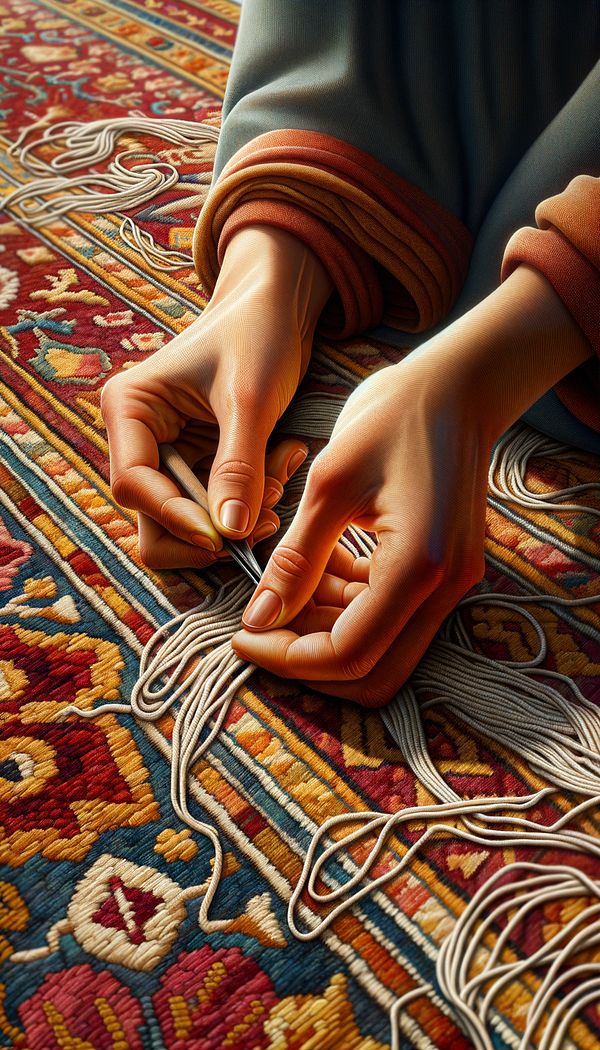What is Hand Tied?
Hand tied refers to a construction technique used in high-quality furniture and rugs.
Description
Hand tied is a meticulous construction method primarily associated with the production of high-quality, durable furniture and rugs. It involves tying knots by hand to secure the structural components or fibers together, crafting a piece that's both aesthetically pleasing and built to last. This technique is often used in the making of sofas, chairs, and especially area rugs.
In furniture, hand-tying can refer to the process of securing springs to a frame, ensuring even, comfortable support. For rugs, it involves tying each individual yarn to the warp, creating intricate patterns and designs that machines cannot replicate. The hand tying process is labor-intensive and requires skilled craftsmanship, making hand-tied items more valuable and often more expensive than their machine-made counterparts.
Usage
In the context of interior design, hand tied pieces are often sought after for their unique qualities and durability. A hand-tied rug can be a statement piece in a room, showcasing intricate designs and craftsmanship. Likewise, hand-tied furniture is prized for its comfort and longevity, making it a favorable choice for living spaces.
FAQs
-
How does hand tying affect the quality of furniture and rugs?
Hand tying significantly enhances the durability and quality of furniture and rugs. The careful, personalized attention to detail ensures that each knot is securely tied, resulting in a piece that can withstand greater wear and tear than machine-made items.
-
Why are hand-tied items often more expensive?
The price reflects the skilled craftsmanship, time, and labor involved in creating hand-tied items. Each piece requires numerous hours of work by artisans who are skilled in this traditional method, making it more costly than mass-produced items.
-
Can hand-tied furniture and rugs be customized?
Yes, one of the advantages of hand-tied items is their potential for customization. Because they are made by hand, it's easier to tailor dimensions, colors, and patterns to meet specific design needs, offering unique, one-of-a-kind pieces.
-
How do I care for hand-tied items?
Hand-tied items should be handled with care. For furniture, it's important to regularly vacuum and professionally clean upholstery. Rugs should be vacuumed without a beater bar and rotated periodically to ensure even wear. Immediate attention to spills and professional cleaning are recommended for longevity.
Practical Application
When adding hand-tied pieces to your interior design, consider their placement and care. Their durability and unique craftsmanship make them excellent focal points in any space. Ensure they are positioned in areas where they can be appreciated for both their aesthetic and functional qualities, but also where they will be preserved and maintained properly. It's also advisable to consult with professionals regarding their care to ensure these pieces last for generations.
-
Furniture Types599 articles
-
Fabrication & Craftsmanship133 articles
-
Floor Coverings & Rugs7 articles
-
Decorating Principles & Elements330 articles
-
Materials & Textiles360 articles
-
American FrontierAmerican Frontier refers to a style of interior design inspired by the American West.
-
FrieseFriese refers to a decorative border or panel
-
ProportionProportion in interior design refers to the ratio between elements in a space.
-
Linenfold PanelLinenfold Panel is a style of carved wood paneling that resembles folded linen.
-
Log FurnitureLog furniture is furniture made from whole or partially whole logs.
